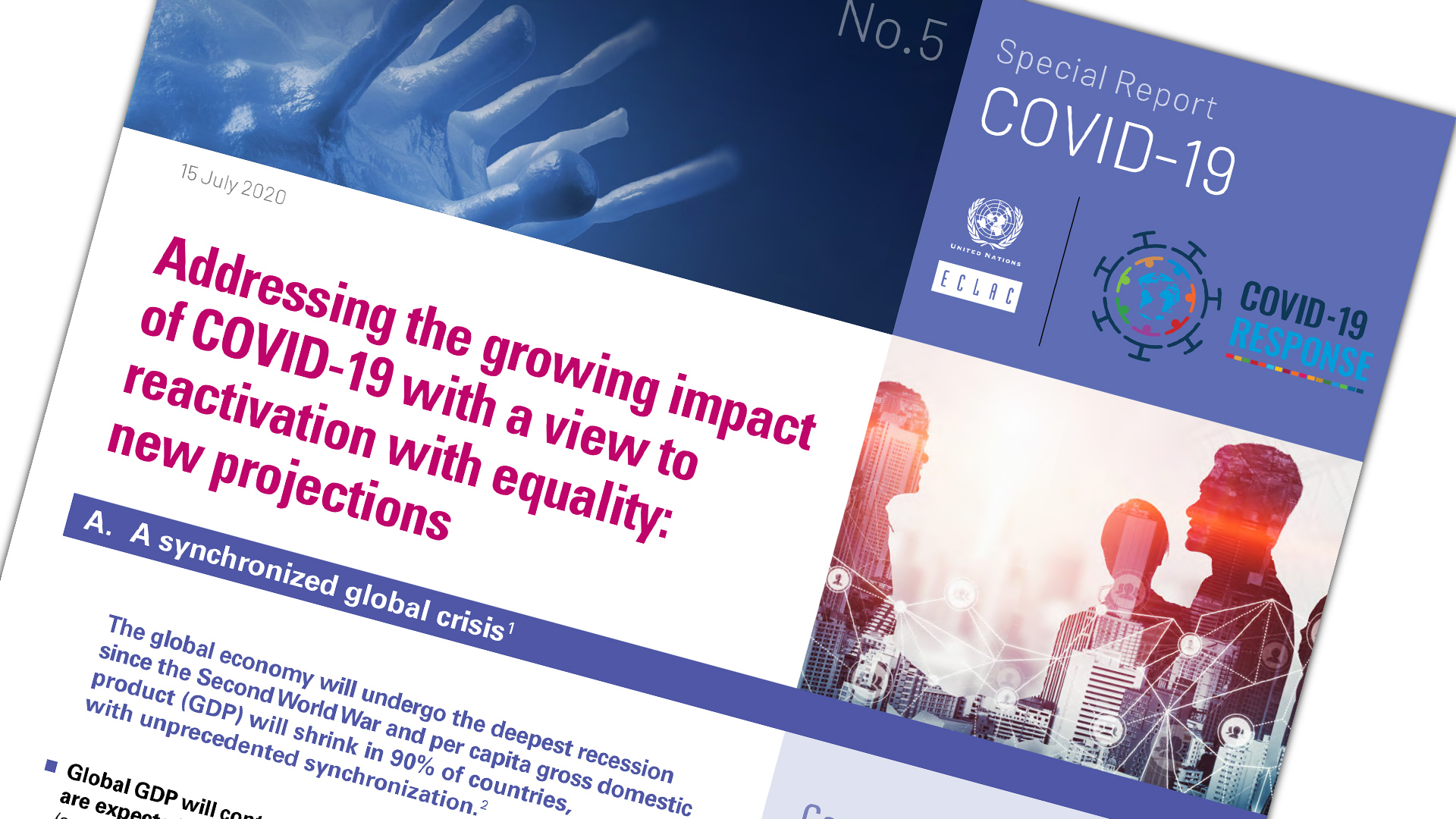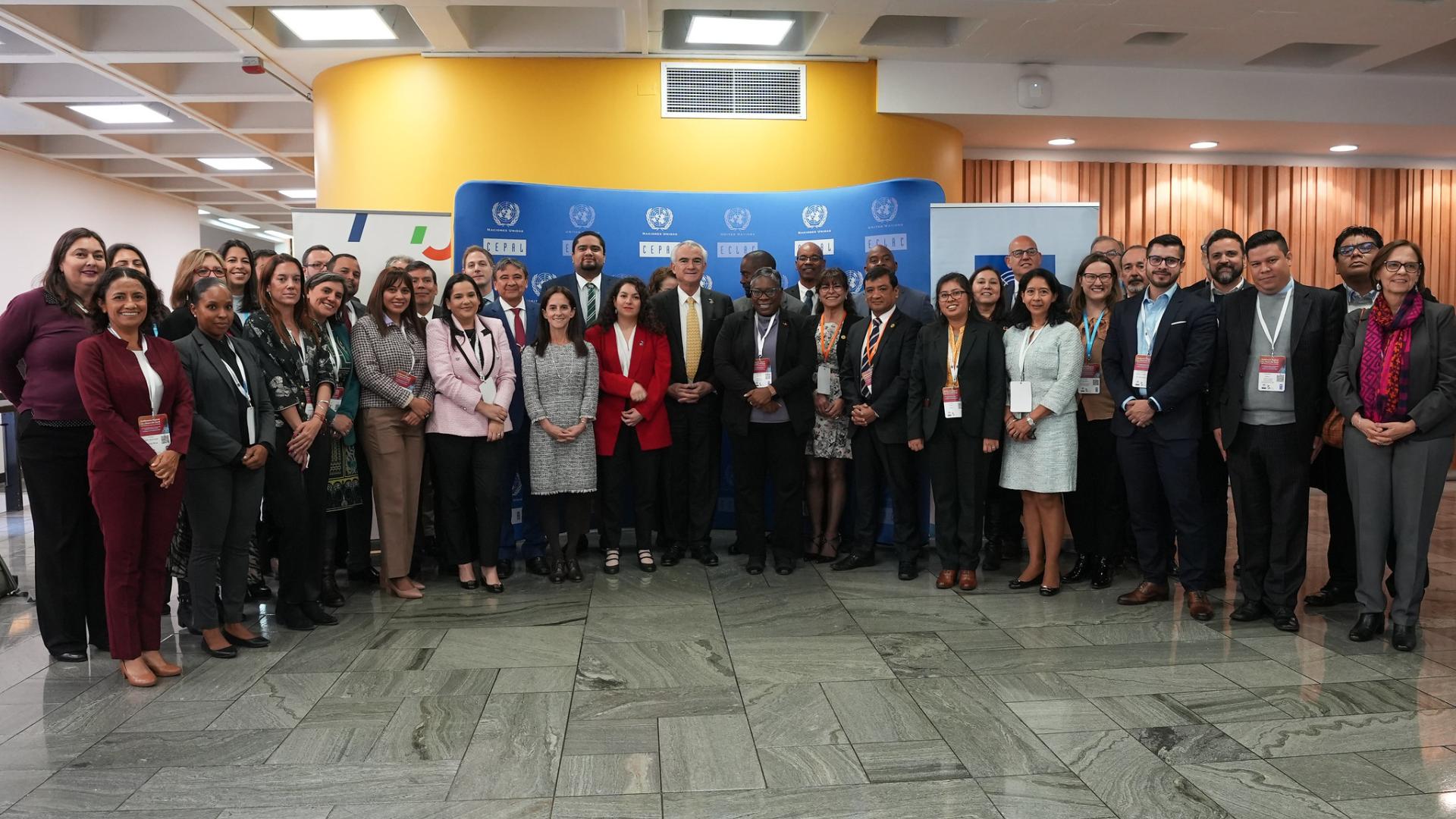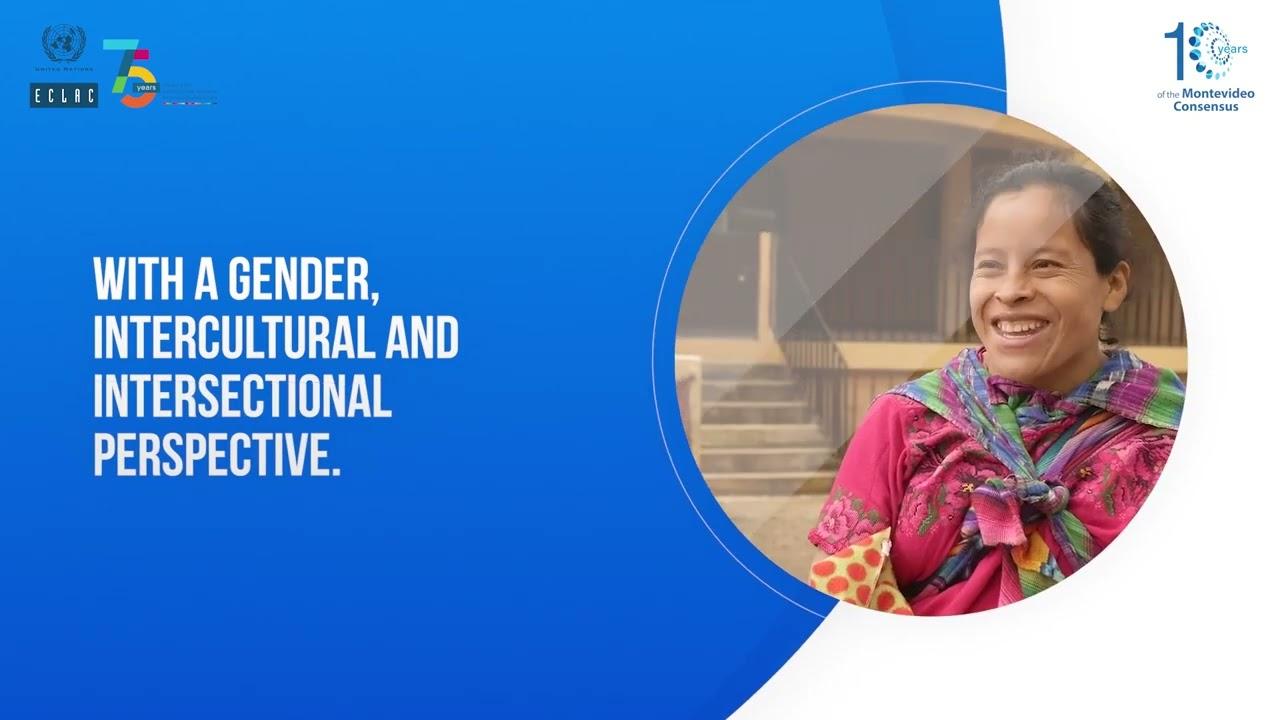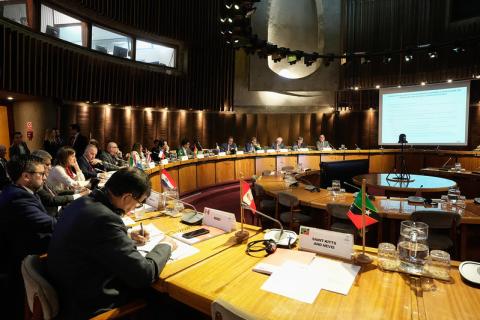Briefing note
Economic activity in the world is falling by more than what was foreseen several months ago as a result of the crisis stemming from the coronavirus disease (COVID-19), and this increases negative external effects on Latin America and the Caribbean through trade channels, the terms of trade, tourism and remittances. In addition, the region is currently at the epicenter of the pandemic, and while some governments have begun to lift measures to contain its spread, others have had to keep them in place or even redouble them due to the persistent daily uptick in cases.
This is according to ECLAC’s Special Report COVID-19 No. 5, entitled Addressing the growing impact of COVID-19 with a view to reactivation with equality: new projections, which was presented this Wednesday, July 15, by the United Nations organization’s Executive Secretary, Alicia Bárcena, in a virtual press conference held from Santiago, Chile.
The report indicates that since both external and domestic shocks have intensified, the region will experience a -9.1% fall in Gross Domestic Product (GDP) in 2020, with drops of -9.4% in South America, -8.4% in Central America and Mexico, and -7.9% in the Caribbean upon excluding Guyana, the strong growth of which prompts a smaller contraction in the subregional total (-5.4%).
The document sustains that the fall in economic activity is of such a magnitude that GDP per capita in Latin America and the Caribbean will end 2020 at a level similar to what was seen in 2010 – meaning that there will be a setback of 10 years in income levels per inhabitant.
“A greater increase in unemployment is also foreseen now, which in turn will produce a significant deterioration in poverty and inequality levels,” Alicia Bárcena stated in her presentation.
It is expected that the regional unemployment rate will be around 13.5% by the end of 2020, which represents an upward revision (2 percentage points) of the estimate presented in April and a 5.4 percentage point increase versus the 2019 figure (8.1%). With this new estimate, the ranks of the unemployed are seen swelling to 44.1 million people in total, which represents an increase of nearly 18 million people versus the level in 2019 (26.1 million unemployed persons). These figures are significantly higher than those observed during the global financial crisis, when the unemployment rate rose from 6.7% in 2008 to 7.3% in 2009 (0.6 percentage points), the report by the Economic Commission for Latin America and the Caribbean (ECLAC) indicates.
In addition, the -9.1% fall in GDP and the increase in unemployment are seen having a direct negative impact on the income of households and their possibilities for obtaining enough resources to meet basic needs.
In that context, ECLAC forecasts that the number of people living in poverty will rise by 45.4 million in 2020, which means that the total number of people in that situation will go from 185.5 million in 2019 to 230.9 million people in 2020 – a figure that represents 37.3% of Latin America’s population. Within this group, the number of people experiencing extreme poverty is seen rising by 28.5 million, going from 67.7 million people in 2019 to 96.2 million in 2020, a figure equivalent to 15.5% of the total population.
ECLAC also forecasts greater inequality in income distribution in all of the region’s countries: the Gini index is seen increasing by between 1% and 8% in the 17 countries analyzed, and the worst results are expected in the region’s biggest economies.
According to the report, countries in the region have announced major packages of fiscal measures to confront the health emergency and mitigate its social and economic effects. In addition, the magnitude of the current crisis has led monetary authorities to include conventional and non-conventional tools in their approaches. Actions taken by central banks in the region have been geared towards not only attenuating the effects of the crisis and laying the foundation for an eventual reactivation, but also preserving their economies’ macro-financial stability.
“Although the region’s countries have announced very important measures, to the extent that the confinement is prolonged, additional efforts are needed to meet basic needs and sustain household consumption. ECLAC has made several proposals including the implementation of an emergency basic income as an instrument of social protection, an anti-hunger grant – equivalent to 70% of one regional extreme poverty line ($67 dollars based on the 2010 dollar), with a total cost estimated at 27.1 billion dollars (0.52% of regional GDP) – and several initiatives to support companies and at-risk workers. In order to implement any of these lines of action, it is necessary to strengthen the role of international financial institutions so they can better support countries,” Alicia Bárcena emphasized.
“National efforts must be supported by international cooperation to expand policy space through increased financing under favorable conditions and debt relief. Likewise, making progress on equality is crucial for effectively controlling the pandemic and for a sustainable economic recovery in Latin America and the Caribbean,” Bárcena affirmed.



